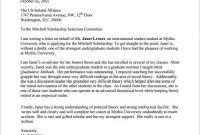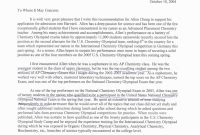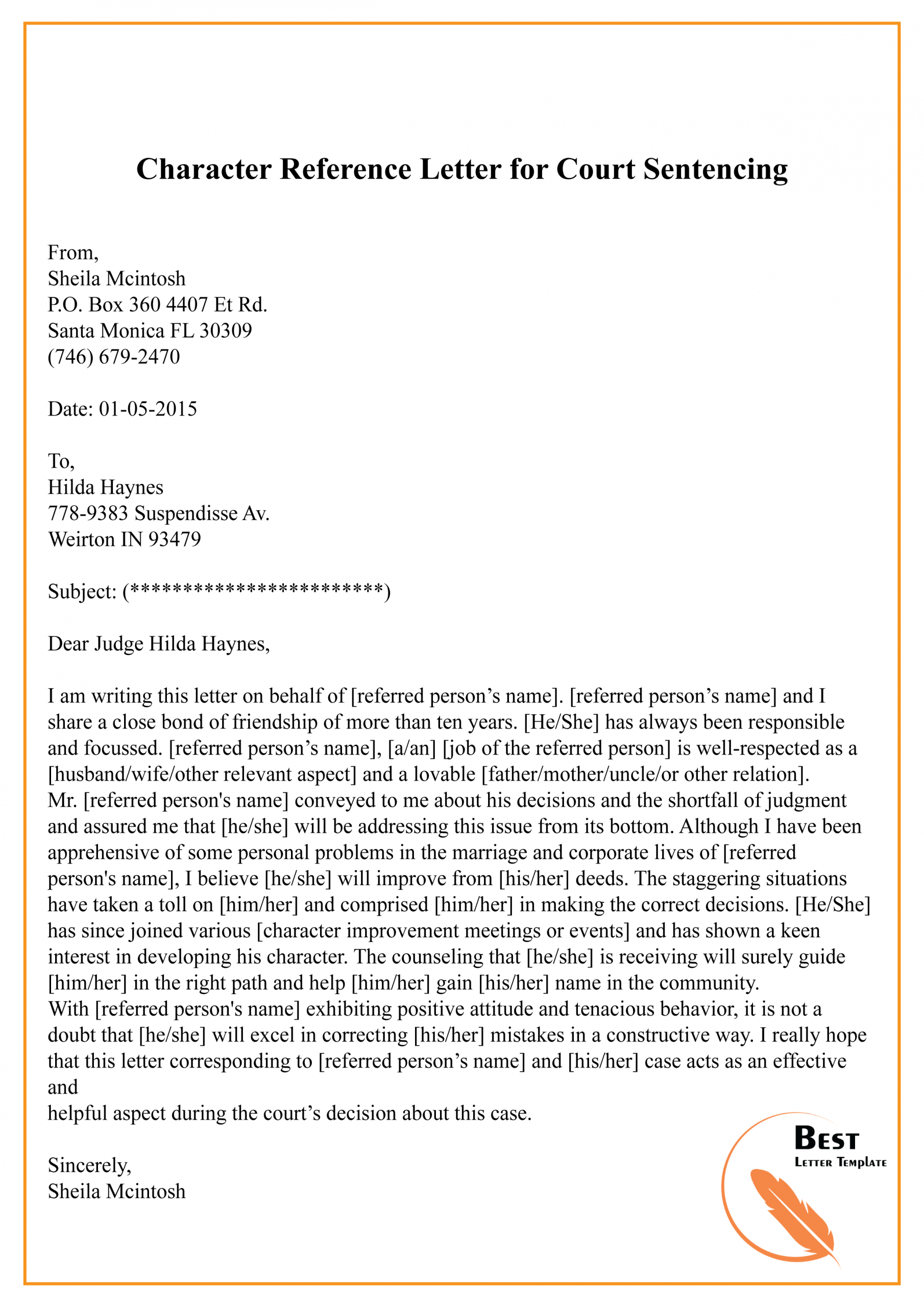 Character Reference Letter For Court Sentencing 01 Best for proportions 2480 X 3508
Character Reference Letter For Court Sentencing 01 Best for proportions 2480 X 3508Character Reference Letter to Judge Before Sentencing: Influencing a Court’s Decision Through the Power of Words
Character Reference Letter To Judge Before Sentencing – In the realm of the legal system, where the fate of individuals rests upon the scales of justice, there exists a tool capable of swaying the court’s decision — the Character Reference Letter. A well-crafted Character Reference Letter possesses the potential to shed light on an individual’s true nature, allowing the judge to see beyond the charges and sentencing guidelines. In this comprehensive guide, we will explore the intricacies of writing a compelling Character Reference Letter that can profoundly impact a court’s verdict.
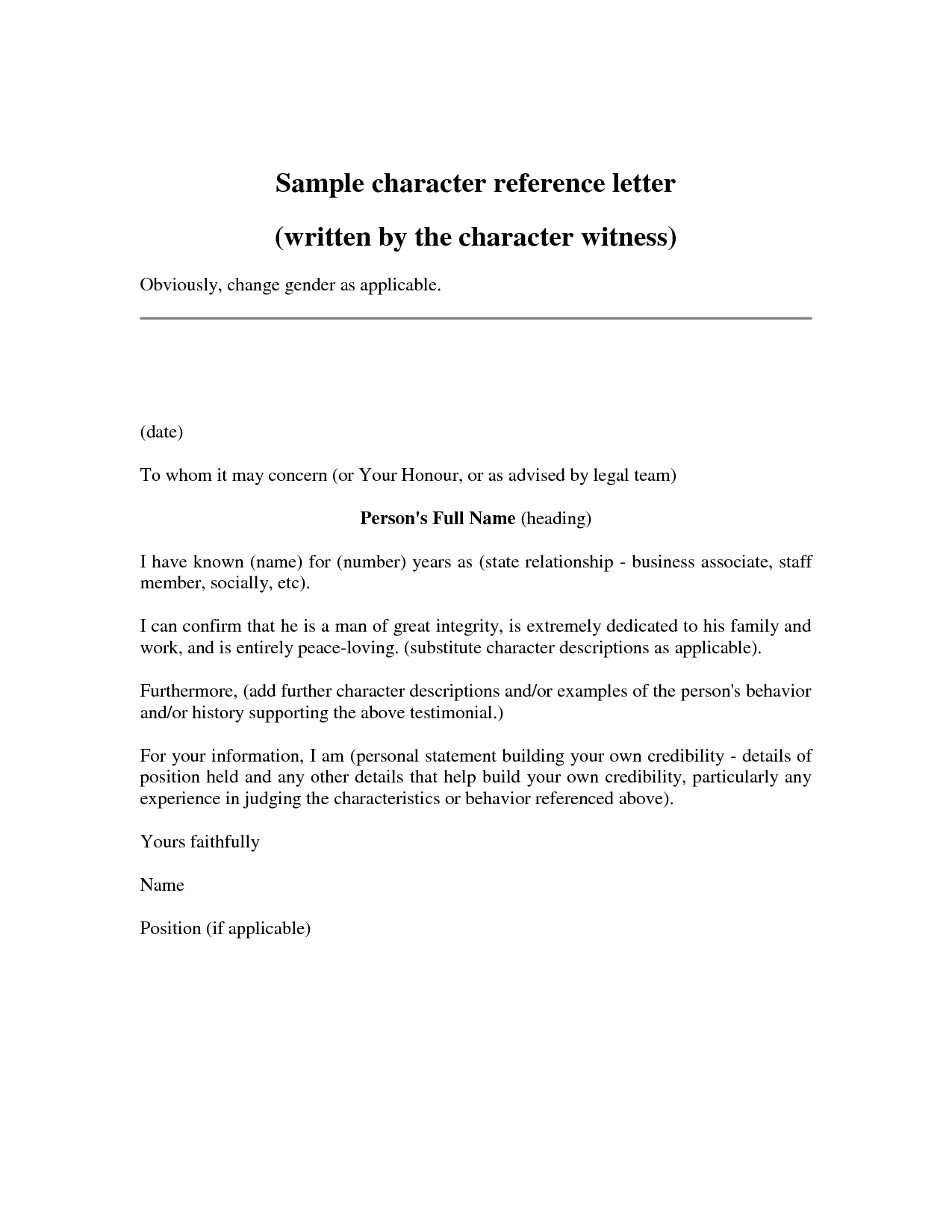 Character Letters For Court Templates Google Search about measurements 1275 X 1650
Character Letters For Court Templates Google Search about measurements 1275 X 1650Purpose of a Character Reference Letter
A Character Reference Letter serves as a testimonial, offering a glimpse into the character, integrity, and potential for rehabilitation of the accused person. Its purpose is to present a comprehensive and unbiased perspective that supplements the evidence and arguments presented in court. This letter, written by someone familiar with the accused, can humanize the individual, revealing their positive qualities, strengths, and potential for positive change.
What Should Be Included in a Character Reference Letter
- Detailed Information About the Writer: The letter should begin with the writer’s full name, occupation, and contact information. This establishes credibility and provides the court with a means of verifying the letter’s authenticity.
- Relationship of Writer to the Accused: Clearly state the nature and duration of the relationship with the accused person. Whether it’s a family member, friend, colleague, or mentor, highlighting the depth of connection helps the court understand the context from which the letter originates.
- Qualifications of the Writer: Share any relevant qualifications or expertise that position the writer as someone capable of accurately assessing the accused person’s character. This could include professional credentials, educational background, or involvement in community activities.
- Appreciation of the Accused: Express genuine gratitude for the person being referred to. Discuss their positive impact on others’ lives, highlighting specific instances where their actions made a difference. Emphasize their capacity for growth and the steps they have taken towards rehabilitation.
- Details of the Accused Person’s Character and Rehabilitation: Describe the accused person’s character traits, highlighting their positive qualities, such as integrity, honesty, or compassion. Include examples demonstrating their commitment to personal growth, rehabilitation, and any steps taken to make amends.
- Extracurricular Activities: If applicable, mention any extracurricular activities the accused person has been involved in, particularly those that display dedication, leadership, or community engagement. These activities can further prove their character and willingness to contribute positively to society.
- Conclusion of the Letter: End the letter with a powerful concluding statement, reiterating the writer’s belief in the accused person’s capacity for change and their potential to reintegrate into society as a law-abiding citizen.
 Character Letter To Judge Before Sentencing 01 Best Letter within proportions 2480 X 3508
Character Letter To Judge Before Sentencing 01 Best Letter within proportions 2480 X 3508What Not to Include in a Character Reference Letter
- Inappropriate Language or Accusations: Avoid using derogatory language or making baseless accusations. The letter should maintain a respectful tone and focus on the positive aspects of the accused person’s character.
- Bias: Ensure that the letter remains unbiased and objective. While it’s natural to support someone we care about, presenting an honest and balanced perspective that reflects the accused person’s true character is crucial.
- Personal Opinions: Refrain from sharing personal opinions not substantiated by facts or observations. Stick to concrete examples and objective assessments of the accused person’s character.
- Grammatical Correctness: Pay close attention to grammar, punctuation, and overall language proficiency. A well-written letter strengthens its credibility and ensures the judge can comprehend its contents.
Tips for Writing a Compelling Character Reference Letter
- Start with a Positive Tone: Begin the letter with an engaging and positive tone to capture the reader’s attention. Express your confidence in the accused person’s ability to learn from their mistakes and grow.
- Strong Opening Sentence Example: “I am honored to write this Character Reference Letter on behalf of [Accused’s Full Name], a remarkable individual whose unwavering determination and commitment to personal growth have left an indelible mark on all fortunate enough to know them.”
- Focus on Positive Qualities and Strengths: Emphasize the accused person’s positive traits, such as honesty, empathy, or resilience. Provide specific examples that illustrate these qualities and demonstrate their potential for positive change.
- Pay Attention to Detail: Include specific instances, anecdotes, or achievements that showcase the accused person’s character and highlight their growth or contribution to society. Attention to detail strengthens the credibility of the letter.
- Appropriate Length: Aim for a concise, one-page letter that concisely and effectively captures the essence of the accused person’s character. Judges often have limited time, so a brief yet impactful note is more likely to leave a lasting impression.
 Example Letter For Judge Before Sentencing Valid Letter To pertain to proportions 1000 X 1294
Example Letter For Judge Before Sentencing Valid Letter To pertain to proportions 1000 X 1294The Character Reference Letter’s Format and Structure
To help you understand the proper format and structure, here’s an example of a well-structured Character Reference Letter:
[Your Name]
[Your Address]
[City, State, ZIP]
[Email Address]
[Phone Number]
[Date]
The Honorable [Judge’s Full Name]
[Judge’s Designation]
[Court’s Name]
[Court’s Address]
[City, State, ZIP]
Re: Character Reference for [Accused’s Full Name]
Dear Judge [Last Name],
Introduction: Begin by introducing yourself and your relationship with the accused person.
Body: Share detailed information about your qualifications, appreciation for the accused, their character traits, rehabilitation efforts, and any relevant extracurricular activities.
Conclusion: Express your belief in the accused person’s potential for positive change and successful reintegration into society.
Sincerely,
[Your Full Name]
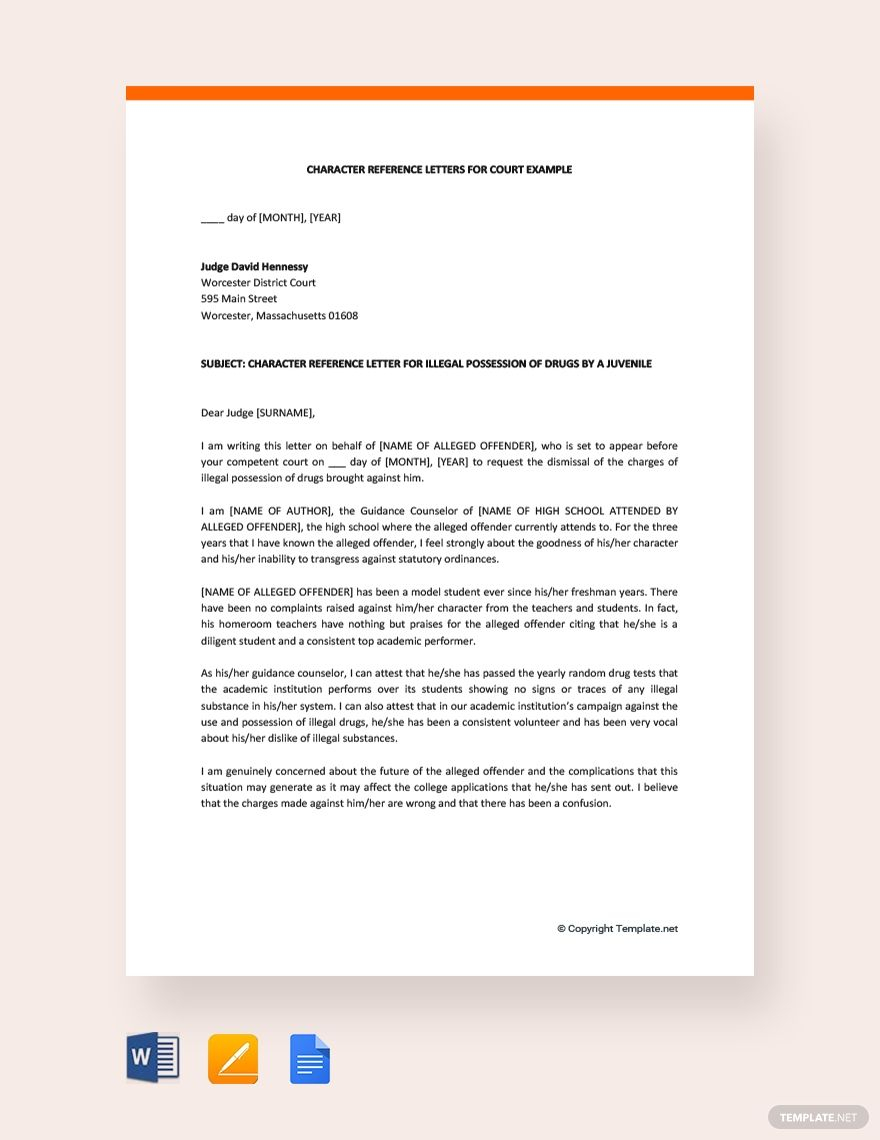 Free Character Reference Letters For Court Examples within measurements 880 X 1140
Free Character Reference Letters For Court Examples within measurements 880 X 1140The Purpose of Providing a Character Reference Letter Before Sentencing
A Character Reference Letter before sentencing offers a unique opportunity for the accused to present themselves in the best possible light. By showcasing their model character and potential for change, this letter can significantly influence the court’s decision and shape the future of the convicted individual. It offers a chance for the accused person to illustrate their capacity to contribute positively to society, increasing the likelihood of receiving a fair and balanced sentence.
Situations Where Character Reference Letter is Not Necessary
While a Character Reference Letter can be a powerful tool, there are instances when it may not be necessary. Suppose the accused person is already well-known to the court, such as in cases of high-profile individuals or repeat offenders. In that case, the court may have sufficient information to make an informed decision without additional references. In such cases, the focus may shift toward legal arguments and evidence rather than personal character assessments.
Involvement of the Letter Writer After Sentencing
After the sentencing, the accused person and the letter writer must maintain contact, as this connection can play a pivotal role in the post-sentencing phase. Offering support, guidance, and mentorship can help convicted individuals reintegrate into society and make positive changes in their lives. The letter writer bears a moral responsibility to ensure that their words were not in vain and to assist the accused person in their journey towards rehabilitation.
Conclusion
A Character Reference Letter possesses the extraordinary power to influence a court’s decision, revealing the accused person’s true character and potential for change. By incorporating the tips and guidelines presented in this article, you can craft a compelling letter that captures the essence of the individual’s character, strengths, and aspirations. Remember, your words hold the potential to shape lives and inspire transformation. For additional resources and guidance on writing Character Reference Letters, consult reputable legal sources or seek advice from legal professionals.
Final Thoughts: Crafting a persuasive Character Reference Letter requires careful consideration, empathy, and an honest portrayal of the accused person. By harnessing the power of words, we can help judges see the potential for growth, redemption, and positive change in those who have made mistakes. Together, we can contribute to a fairer, more compassionate legal system that genuinely believes in the capacity for human transformation.
